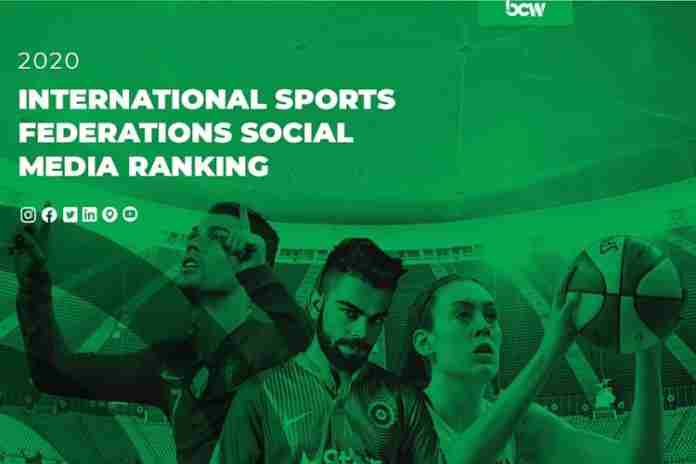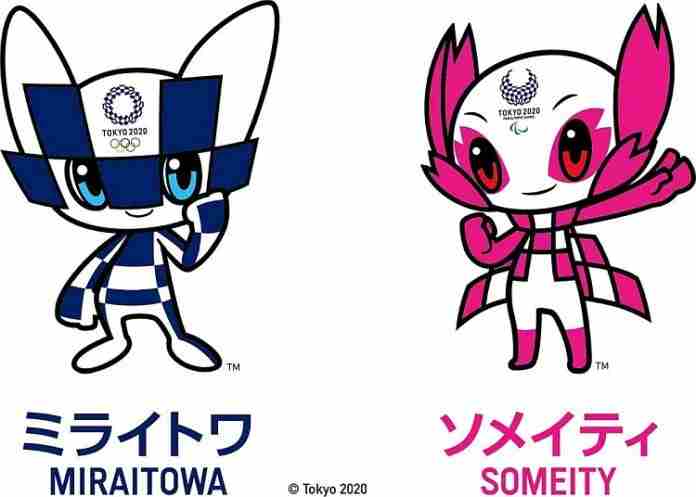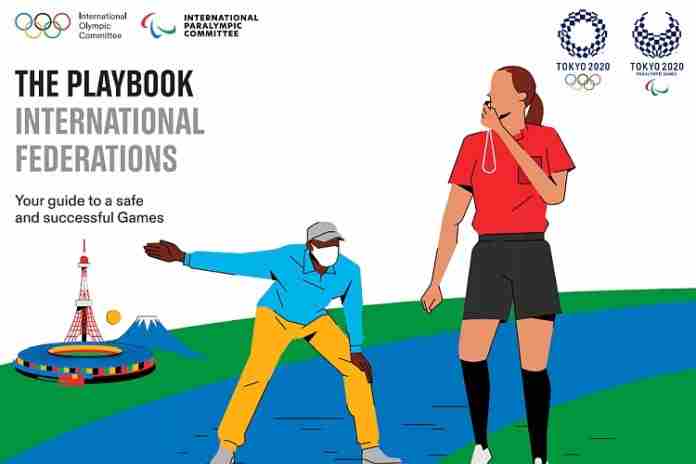(★ Friends: Wow! Thanks to – now – 41 donors toward our December bill for server and support costs; we’re at 96% of our goal. If you would like to help, please donate here. Your enthusiasm is what keeps this site going. ★)
The tumult over the Tokyo Games, the worldwide pandemic and a raft of other international sports competitions, scandals and schemes overshadowed the release of a fascinating report on international sports and their fans.
The sports division of the international communications giant BCW – which stands for Burson Cohn & Wolfe – issued its fourth annual International Sports Federations Social Media Ranking on 19 January. Despite running on for 28 pages, it’s not a complete report of social-media activity by all of the various IFs for Olympic and other sports, but offers the leaders in multiple categories.
It also offers a proprietary measuring tool for the “true reach” of a single, social-media post by an IF. So, by the numbers:
● Largest number of total IF social followers in 2020, combining Facebook, Instagram, LinkedIn, Twitter, TikTok and YouTube:
(1) 59.0 million ~ ICC (Cricket)
(2) 37.8 million ~ FIFA (Football)
(3) 12.2 million ~ FIBA (Basketball)
(4) 5.4 million ~ FIVB (Volleyball)
(5) 5.1 million ~ World Rugby
(6) 4.0 million ~ World Athletics
(7) 3.8 million ~ FITEQ (Teqball)
(8) 3.4 million ~ International Cheer Union
(9) 3.3 million ~ UCI (Cycling)
(10) 3.1 million ~ BWF (Badminton)
Note the presence of non-Olympic federations in three of the top 10: Cricket, Teqball and Cheer. Compared to the Olympic-sport federations, most of which have 175-200 or more member national federations, the International Cricket Council has 105; Teqball claims 95 and the Int’l Cheer Union has 116.
But that does not keep them from being listed as among the giants in terms of total social-media followers.
● The BCW measure of “true reach” is a unique estimate of the actual impact of these federations on their audience. Per the report:
“The indicator is based on a machine-learning algorithm (Klear.com) that predicts the number of total views an account gets per post. ‘True Reach’ is able to identify patterns that correspond with real users, as opposed to automated bots or the sporadic users. …
“Here it becomes evident how ‘True Reach’ works: No regular interaction with followers and a mass of passive subscribers results in a low number”:
(1) 4.5 million ~ ICC (Cricket)’s projected views per post
(2) 333,080 ~ World Rugby
(3) 242,737 ~ FIBA (Basketball)
(4) 210,728 ~ FIVB (Volleyball)
(5) 153,896 ~ UCI (Cycling)
(6) 121,601 ~ FIA (Automobile)
(7) 116,671 ~ FEI (Equestrian)
(8) 114,448 ~ BWF (Badminton)
(9) 100,870 ~ FIS (Ski & Snowboard)
(10) 96,450 ~ UWW (Wrestling)
This list looks a lot different than the total-followers ranking, with four new entries for the international auto-racing federation and Olympic federations for Equestrian, Ski & Snowboard and Wrestling. (FIFA was not included in this ranking because it does not use Instagram; we can guess that it would have ranked second overall.)
● So how do the successful federations do it? The report cites constant engagement as most important, with the leaders in the larger platforms as:
Facebook: 105 active IF accounts have a combined audience of 63.6 million
(1) 23.0 million ~ ICC (Cricket: average of 28.3 posts per day)
(2) 6.9 million ~ FIBA (Basketball: avg. 4.3 posts per day)
(3) 4.5 million ~ FIFA (Football)
(4) 3.4 million ~ Int’l Cheer Union
(5) 3.0 million ~ FITEQ (Teqball)
Twitter: 120 active IF accounts have a combined audience of 40.7 million
(1) 23.8 million ~ FIFA (Football: average of 21.7 tweets per day)
(2) 11.4 million ~ ICC (Cricket: avg. 23.8 tweets per day)
(3) 541,778 ~ FIA (Automobile)
(4) 438,040 ~ World Rugby (Sevens avg. 8.3 tweets per day)
(5) 437,960 ~ FIBA (Basketball: 23.4 tweets per day)
Instagram: 93 active IF accounts have a combined audience of 30.3 million
(1) 15.7 million ~ ICC (Cricket: average of 18.42 posts per day)
(2) 1.4 million ~ World Rugby (avg. 2.24 posts per day)
(3) 1.3 million ~ FIVB (Volleyball: avg. 4.78 posts per day)
(4) 1.0 million ~ FIBA (Basketball: avg. 2.33 posts per day)
(5) 921,945 ~ FIA (Automobile)
(Posts per day were not provided for all federations; the report lists the top 10 by category.)
The BCW report notes that Facebook and Instagram are “both better suited when it comes to generating engagement and establishing relationships with audiences,” but what about social media and money?
There is some correlation, but not a lot. Based on our exclusive survey of IF finances last May, FIFA (Football: $4.6 billion) and FIBA (Basketball: $102.2 million) are the only two worldwide federations which grossed more than $100 million for their sports in 2018. The other Olympic federations who were social-media leaders in several categories included FIVB (Volleyball: $65.3 million), World Athletics ($51.1 million), UCI (Cycling: $41.9 million), World Rugby ($33.5 million) and BWF (Badminton: $25.8 million) per their 2017 or 2018 financials.
What about Cricket? In 2019, when the men’s World Cup was held, the federation generated an impressive $612.6 million in revenue compared to $52.2 million in 2018. The federations for Teqball and Cheer do not post financial statements on their Web sites, but generate very modest revenues compared to their social-media standing.
So what can be said for the place of social media as a driver of fan engagement leading to more spending on one sport over another? For comparison, let’s check the annual survey of the Content Marketing Institute, which has been surveying businesses for years on their contact activities.
Their 10th annual business-to-consumer (B2C) benchmarks and trends report for 2020 showed social media, Web site and e-mail communications as the preferred channels, but with different uses for each:
● To build awareness: 31% said blog posts and social media performed best.
● To secure leads: 16% cited e-mail newsletters, 13% said social media and 13% said in-person events performed best.
● To nurture leads: 24% cited e-mail newsletters, 17% said social media performed best.
● To convert to sales: 22% said in-person events and 21% cited e-mail newsletters performed best.
Social media has its place, but is not an all-in-one panacea. Let’s remember as well that all of this discussion is around communications tools vs. straight-out advertising. That’s beyond the financial reach of many Olympic federations and social media offers a much less expensive way to touch fans in the 21st Century.
But traditional media, especially television, has not gone away. And the MediaKind 2021 Sports D2C Forecast makes the point that streaming video – sometimes via social platforms, but primarily Web-based – has not yet reached premiere status:
“The rights-holders who collaborated with this research project stated that having a direct relationship with their fans will be critical to their business medium to long term. This goes
beyond the creation of an official website. It means offering fans live content and in a medium that opens up a two-way relationship to provide a richer experience for the viewer and essential fan data and potential revenue for the sports body. …
“The proportion of the hundreds of clubs, leagues, federations, confederations, and private promoters currently operating a D2C OTT [direct-to-consumer] service with rich content remains small. But all rights-holders, even those currently without their own platform, are exploring the commercial opportunities which D2C OTT throws up. The sector looks certain to be the biggest growth area in sports media in the coming decade. New launches are announced every week, and new models and strategic relationships are being studied to ensure a return on investment for sport.
“However, it is likely to be a decade or more before D2C becomes the primary distribution method for premium rights-holders. Further, this research suggests, the pivot could be a two-speed process, with the US leading the way and Europe following.” (Emphasis added)
Social media is important now and will continue to be throughout the 2020s. But it’s a platform and not a solution. Terrence Burns, a 15-year communications and marketing executive at Delta Airlines, joined the Olympic Movement as part of Delta’s action team for its 1996 Olympic sponsorship in Atlanta. He left to become involved full-time with the Olympic Games and related events ever since, and his advice at the 2018 FINA World Water Polo Conference rings just as true today:
“Before talking about promotional tactics, we should go way back. I think that you have to create a strong brand narrative, a real story about water polo. You need to identify why it is important to the consumers and the fans. And then the tactics follow. …
“During my presentation I was really referring to the Why. You have to come up with the Why before you come up with the How. In this case, why is water polo unique? Why is it different from any other team sport? And why is that valuable to the consumer?”
A post on Facebook, or Instagram or Twitter is only the “How” and not the “Why.” That’s a much harder challenge that underscores both the promise and the problem of social media today.
Rich Perelman
Editor
You can receive our exclusive TSX Report by e-mail by clicking here. You can also refer a friend by clicking here, and can donate here to keep this site going.
For our 709-event International Sports Calendar for 2021 and beyond, by date and by sport, click here!


























